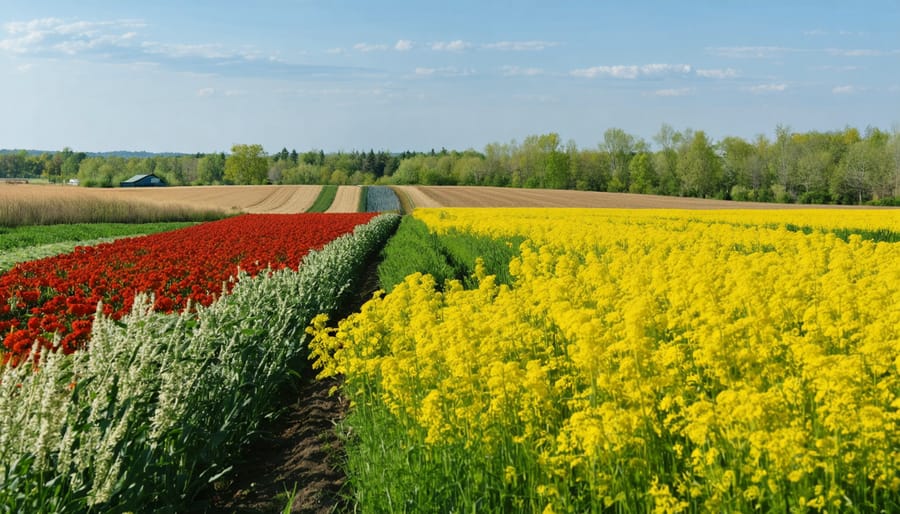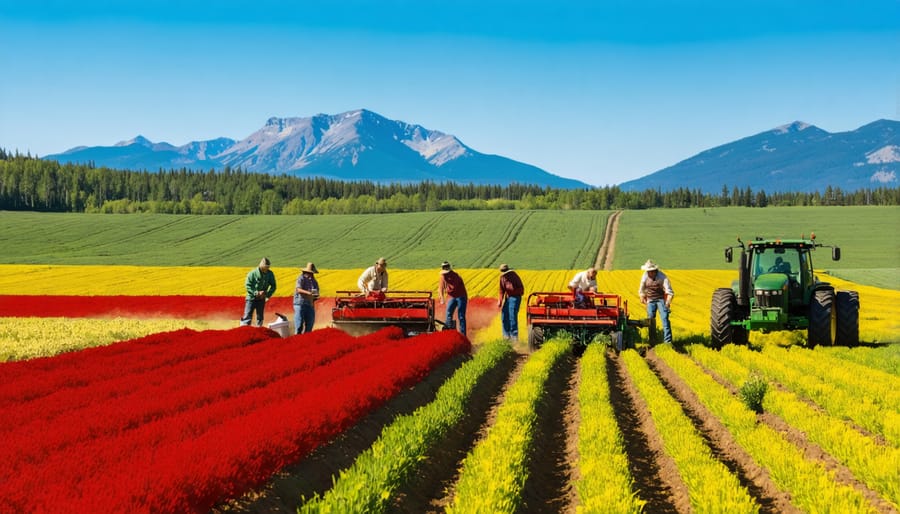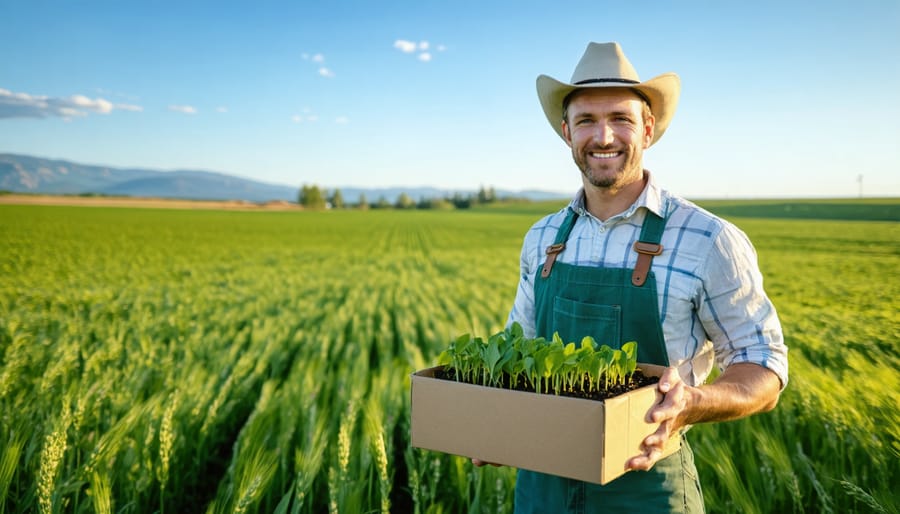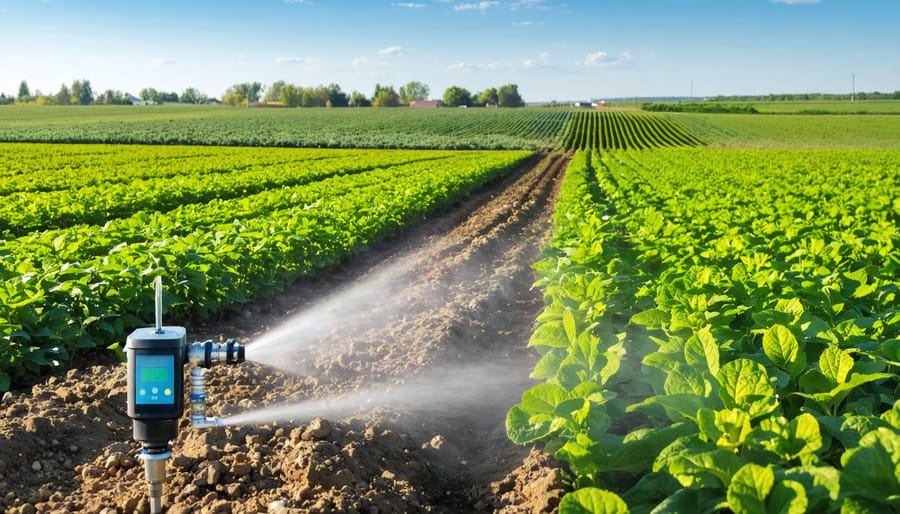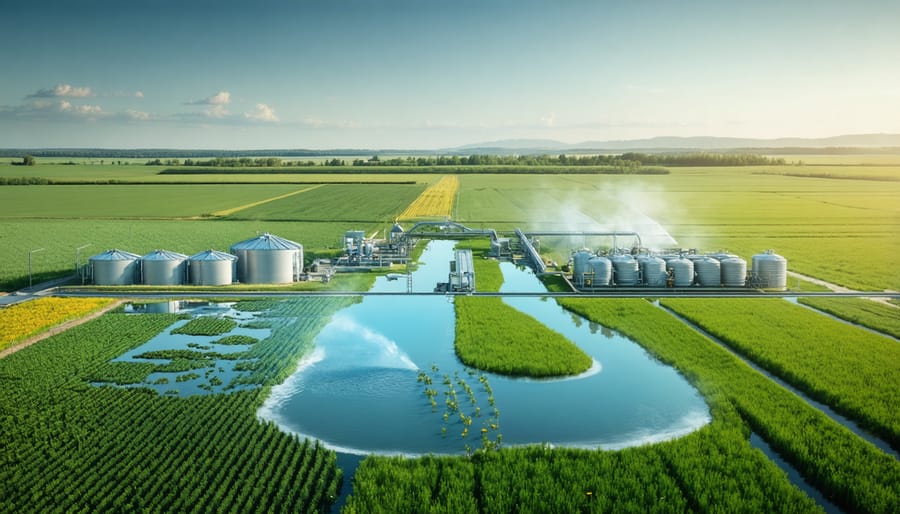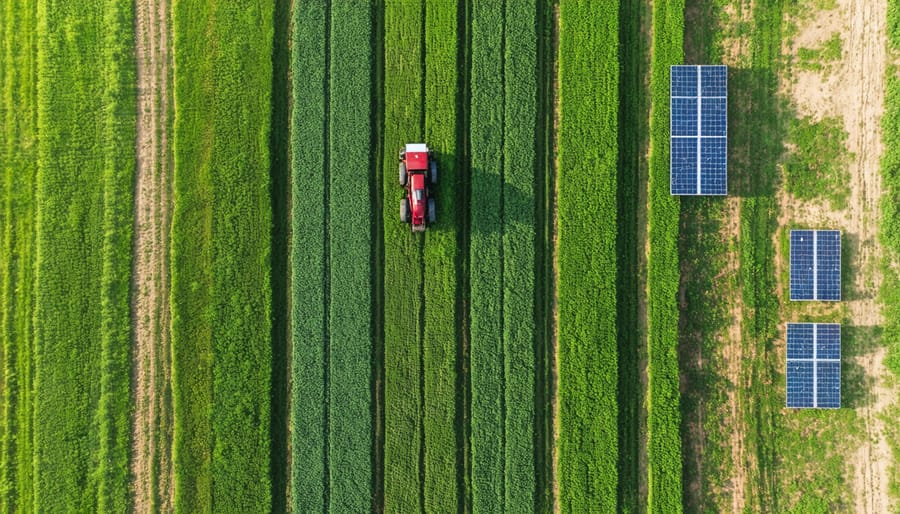Biodiversity powers the success of every Canadian farm, from the microorganisms enriching our Prairie soils to the complex ecosystems supporting our crop yields. At its core, agricultural biodiversity operates across three distinct yet interconnected levels: genetic diversity within individual species, species diversity across plant and animal populations, and ecosystem diversity throughout our landscapes. Here in Alberta, farmers witnessing firsthand how these three levels work together are reporting up to 30% better drought resilience and 25% higher productivity compared to monoculture systems. By understanding and actively managing these biodiversity levels – from selecting diverse crop varieties to maintaining natural habitats alongside fields – producers can build more resilient, profitable operations that thrive even in challenging growing seasons. Our local success stories, from mixed farms in central Alberta to regenerative ranches in the foothills, demonstrate how strategic biodiversity management has become not just an environmental choice, but a powerful tool for agricultural success in our changing climate.
Species Diversity: The Foundation of Strong Agricultural Systems
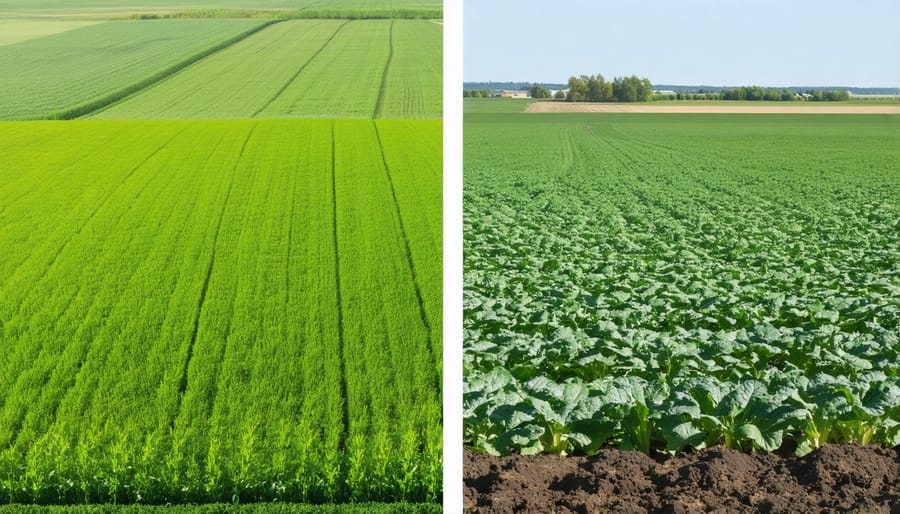
Crop Diversity Success Stories
Meet Sarah Thompson from Lacombe County, who transformed her 800-hectare farm by introducing a seven-crop rotation system. “Adding canola, wheat, barley, peas, flax, and cover crops not only improved our soil health and resilience, but also reduced our pest problems by 60%,” she shares.
In Mountain View County, the Martinez family partnership showcases how integrating diverse crop species can boost farm productivity. Their innovative approach combines traditional grain crops with newer additions like quinoa and hemp, resulting in a 40% increase in overall yield stability over five years.
Perhaps most inspiring is the story of the Weber Brothers in Sturgeon County. After facing recurring disease pressures in their canola-wheat rotation, they expanded to include pulses and ancient grains. “We now grow eight different crops throughout the year,” explains John Weber. “The diversity has made our operation more resilient to market fluctuations and weather extremes.”
These success stories demonstrate how Alberta farmers are leading the way in agricultural biodiversity. Their experiences show that while transitioning to more diverse cropping systems requires careful planning, the benefits to soil health, pest management, and farm economics make it a worthwhile investment for long-term sustainability.
Native Species Integration
Incorporating native species into your farming operation creates a powerful foundation for enhancing biodiversity while maintaining productive agricultural land. Here in Alberta, native plants like rough fescue, blue grama grass, and prairie sage have evolved alongside local wildlife for thousands of years, making them perfectly adapted to our climate and soil conditions.
When you integrate native species into field margins, shelterbelts, or dedicated wildlife corridors, you’re essentially creating biological highways that connect different parts of your farm. These corridors allow beneficial insects, pollinators, and natural predators to move freely throughout your property, providing natural pest control and improved pollination services.
Calgary-area farmer Sarah Thompson has seen firsthand how native species integration can boost farm productivity: “Since planting native flowering species along our canola fields, we’ve noticed increased yields due to better pollination. The native plants also support beneficial insects that help control pest populations naturally.”
Consider starting small by identifying areas where native species can complement your existing operation. Buffer strips between fields, riparian areas, and unused corners are excellent places to begin. Local conservation authorities and agricultural extension offices can help you select appropriate native species for your specific location and soil type.
Remember that native plants typically require less maintenance once established, as they’re naturally adapted to local conditions. This means lower input costs and reduced labour over time, while still supporting essential ecosystem services that benefit your farm.
Genetic Diversity: Your Farm’s Insurance Policy
Heritage Seed Programs
Heritage seed programs across Canada play a vital role in preserving our agricultural biodiversity and supporting circular farming practices. Organizations like Seeds of Diversity Canada and the Bauta Family Initiative on Canadian Seed Security work directly with farmers to maintain and expand collections of heritage crop varieties.
These programs maintain seed libraries containing thousands of locally-adapted crop varieties, many of which have been grown by Canadian farmers for generations. In Alberta alone, over 200 farmers participate in seed-saving networks, preserving everything from ancient grain varieties to heritage vegetables uniquely suited to our prairie growing conditions.
The University of Alberta’s Heritage Seed Program, for example, has successfully preserved over 250 varieties of cold-hardy vegetables and grains specifically adapted to northern growing conditions. Participating farmers receive training in seed-saving techniques and contribute to a living seed bank that ensures these valuable genetic resources remain viable for future generations.
Beyond preservation, these programs provide practical support through seed-saving workshops, mentorship opportunities, and regional seed exchanges. This community-based approach helps farmers reduce their dependence on commercial seed suppliers while maintaining crop diversity that’s crucial for farm resilience and food security.
To get involved, farmers can connect with their local seed-saving network or participate in annual seed swap events held throughout Alberta. These initiatives not only preserve our agricultural heritage but also strengthen our farming communities.
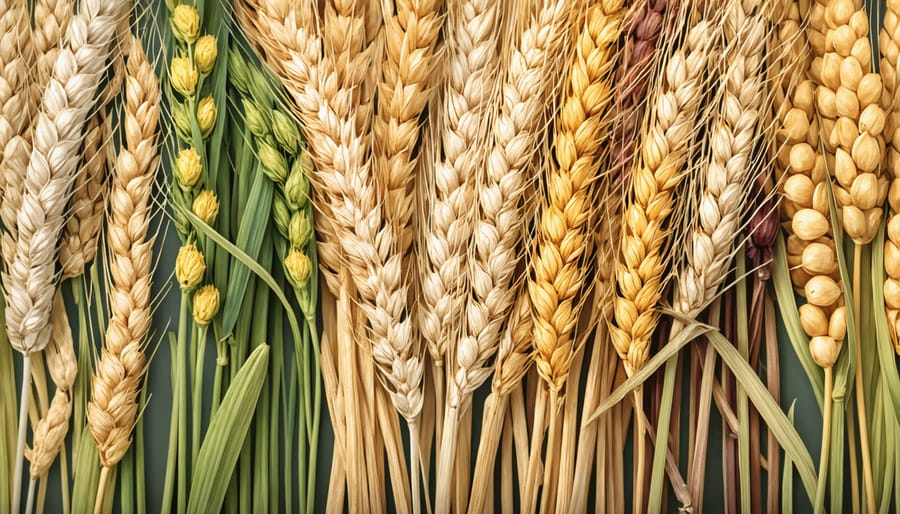
Climate Adaptation Through Genetics
Alberta’s agricultural landscape is experiencing significant climate shifts, making genetic diversity in crops more crucial than ever. Local farmers are discovering that maintaining a wide variety of genetic traits within their crop species helps build resilience against unpredictable weather patterns and emerging pest challenges.
Take wheat varieties, for example. Many Alberta farmers now plant multiple wheat varieties with different genetic characteristics across their fields. Some varieties might be more drought-tolerant, while others show better resistance to excess moisture or specific diseases. This genetic diversity acts as a natural insurance policy – if one variety struggles under certain conditions, others may thrive.
The University of Alberta’s Plant Breeding Program has been working with local farmers to develop crop varieties specifically adapted to our changing climate. These new varieties incorporate genetic traits from both modern and heritage crops, creating plants that can better handle temperature extremes while maintaining high yield potential.
Heritage seed saving networks across the province are also playing a vital role. By preserving and sharing diverse genetic varieties of traditional crops, these community initiatives ensure that valuable genetic traits aren’t lost. These preserved genetics might hold the key to developing future crop varieties that can withstand new climate challenges.
For practical implementation, consider starting with a small plot to test different genetic varieties of your main crops. This approach allows you to identify which combinations work best for your specific soil conditions and microclimate while managing risk.
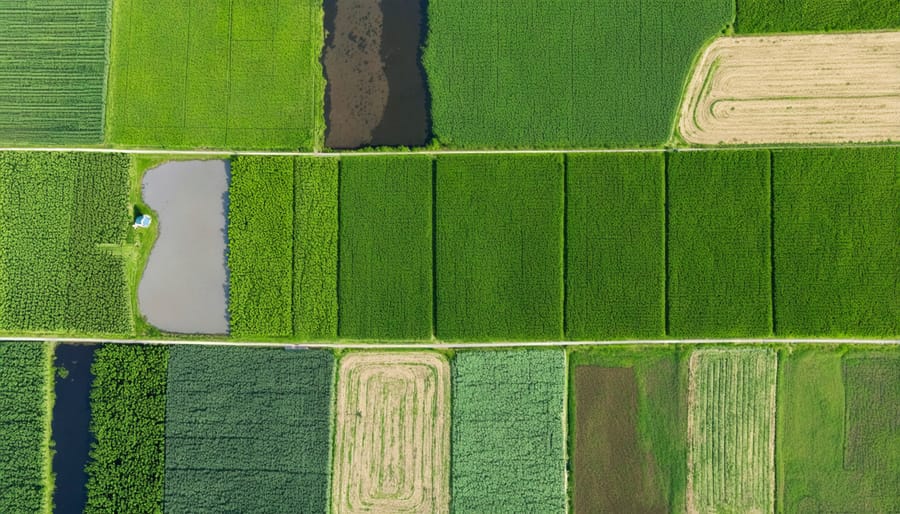
Ecosystem Diversity: Building Resilient Agricultural Landscapes
Beneficial Landscape Features
On Alberta farms, certain landscape features play a crucial role in supporting biodiversity at all levels. Natural windbreaks, such as tree lines and hedgerows, provide essential habitat for birds and beneficial insects while protecting crops from wind damage. Water bodies, including dugouts, wetlands, and natural ponds, create diverse ecosystems that support amphibians and waterfowl while contributing to water-efficient landscape management.
Field margins and buffer zones serve as vital corridors for wildlife movement and create transition zones between different habitats. Maintaining these areas with native plant species enhances their ecological value. Rocky outcrops and brush piles offer shelter for small mammals and reptiles, while also providing hunting perches for beneficial predatory birds that help control pest populations.
Many Alberta farmers have found success incorporating these features into their operations. For example, strategically placed shelterbelts can reduce soil erosion by up to 80% while providing habitat for pollinators. Maintaining at least 10% of farmland as natural habitat has shown to significantly increase beneficial insect populations and improve natural pest control.
These landscape features work together to create a resilient farming system that supports biodiversity while enhancing agricultural productivity. The key is to identify existing beneficial features on your land and protect them while gradually introducing new elements that complement your farming operations.
Ecosystem Services in Action
Alberta’s farms showcase remarkable examples of ecosystem services in action, benefiting both agricultural productivity and the environment. Take the case of John Anderson’s farm near Red Deer, where hedgerows and windbreaks support over 20 species of native birds that help control pest populations naturally, reducing the need for chemical pesticides by approximately 30%.
In the Peace River region, Sarah Mitchell’s rotation grazing system demonstrates how species diversity can improve soil health. By managing cattle movement across native grasslands, she’s documented a 25% increase in soil organic matter over five years, leading to better water retention and crop yields.
The Bergstrom family farm near Lethbridge proves how genetic diversity pays off. By planting multiple wheat varieties with different disease resistances, they’ve maintained steady yields even during challenging disease pressure years, while neighbouring mono-variety fields saw significant losses.
Near Edmonton, the Prairie Heritage Demonstration Farm showcases how wetland preservation supports natural pollinators. Their maintained wetland areas host diverse native bee populations that have increased canola yields by up to 20% compared to farms without natural pollinator habitat.
These real-world examples show how biodiversity at different levels – from genes to ecosystems – creates tangible benefits for Alberta farmers, including improved pest control, soil health, crop resilience, and pollination services.
Practical Steps for Implementation
Implementing biodiversity across all three levels doesn’t have to be overwhelming. Start with simple, manageable steps that align with your farm’s existing sustainable agricultural practices.
For genetic diversity, begin by:
– Planting multiple varieties of the same crop (for example, growing three different wheat varieties)
– Saving and exchanging seeds with local farming networks
– Incorporating heritage livestock breeds when possible
– Maintaining detailed records of genetic varieties used each season
To enhance species diversity:
– Establish buffer zones between fields using native plants
– Create pollinator gardens near crop areas
– Maintain permanent grasslands where possible
– Rotate crops annually, including cover crops
– Leave some areas unmowed during critical wildlife periods
– Install bird boxes and bee houses
For ecosystem diversity:
– Preserve existing wetlands and natural areas
– Create wildlife corridors between different farm sections
– Maintain hedgerows and windbreaks using diverse native species
– Practice integrated pest management to protect beneficial insects
– Implement strategic grazing patterns that mimic natural systems
Start small by choosing one action from each level and gradually expand your efforts. Consider joining local farmer-led initiatives or participating in biodiversity monitoring programs. Many Alberta farmers have found success by partnering with conservation groups to develop farm-specific biodiversity plans.
Remember to monitor and document changes over time. Simple smartphone photos and seasonal species counts can help track progress. Share your experiences with neighboring farmers and learn from their successes. Local agricultural extension offices can provide additional resources and connect you with mentors who have successfully implemented these practices.
These steps not only enhance biodiversity but also contribute to soil health, natural pest control, and climate resilience. Many Alberta farmers report improved yields and reduced input costs after implementing these practices, proving that good stewardship and profitable farming can go hand in hand.
Implementing three-level biodiversity on your farm is more than just an environmental choice – it’s a smart business decision that can significantly enhance your operation’s resilience and productivity. By integrating genetic, species, and ecosystem diversity, Alberta farmers are seeing improved soil health, better pest resistance, and more stable yields even during challenging weather conditions.
The success stories from fellow farmers across the province demonstrate that biodiversity isn’t just theoretical – it’s a practical approach that delivers real results. From reduced input costs to enhanced crop quality, the benefits extend beyond the environmental aspects to positively impact your bottom line.
Starting small and gradually expanding your biodiversity initiatives allows you to learn what works best for your specific situation. Consider joining local farmer networks or agricultural associations that support biodiversity implementation. Many Alberta producers have found that sharing experiences and learning from others has made their transition smoother and more successful.
Remember, every step toward increased biodiversity contributes to the long-term sustainability of your farm and helps build a more resilient agricultural community. Whether you begin with introducing cover crops, establishing wildlife corridors, or preserving heritage seed varieties, your efforts make a difference.
Take the initiative to explore how three-level biodiversity can work for your farm. Connect with local agricultural extension services, attend workshops, and engage with experienced farmers who have successfully implemented these practices. Your journey toward enhanced biodiversity will contribute to both your farm’s success and the future of sustainable agriculture in Alberta.

